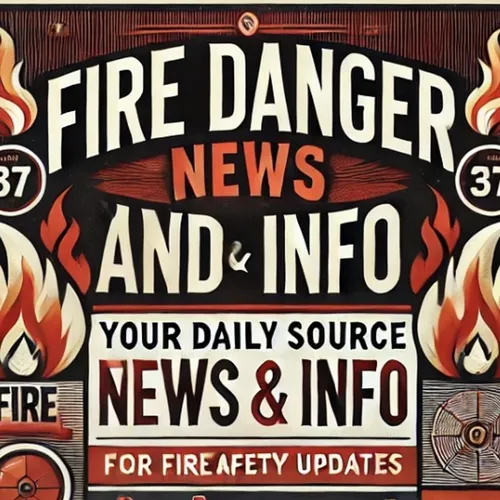Alarming Surge in U.S. Wildfire Danger: Western Region Faces Extreme Risks
- Author
- Quiet. Please
- Published
- Wed 13 Aug 2025
- Episode Link
- https://www.spreaker.com/episode/alarming-surge-in-u-s-wildfire-danger-western-region-faces-extreme-risks--67360193
Across the United States, fire danger is surging as August unfolds, with the Western region facing the most severe risks. According to the United States Department of Agriculture Forest Service, fire danger levels are rated high to extreme in almost all national forests in the Pacific Northwest, and heat waves are causing fuels like grass and forest understory to dry rapidly. Since late May, fire managers in Oregon and Washington have battled 53 large wildfires, covering more than 200,000 acres, and four major fires are currently burning on national forest lands in the region. Fifteen national forests have now imposed campfire restrictions in efforts to prevent additional human-caused wildfires. Fire managers are urging the public to double their prevention measures, noting that almost 93 percent of all wildfires in the United States this year have resulted from human activity.
The National Interagency Fire Center reports that as of August, the United States has experienced 43,381 wildfires since the start of 2025, burning over 3.6 million acres nationwide. By comparison, this is a higher number of fire incidents than last year at this time, though acreage burned remains lower than some prior years. Major fires are active across the West, including significant events in Arizona, California, and Alaska. The largest ongoing fire is the Dragon Bravo Fire, which has consumed more than 130,000 acres on the North Rim of the Grand Canyon in Arizona. This fire began in early July after lightning strikes and remains only about one-third contained. On the Walhalla Plateau, crews are using heavy equipment to build fire lines, but unpredictable winds have caused spot fires that forced firefighters to use indirect strategies. The situation remains challenging, but further containment is expected in the coming days.
In Southern California, the Gifford Fire has become the largest in the state this year, burning more than 80,000 acres, including portions of Los Padres National Forest. As reported by CNN, nearly 2,000 firefighters are working to contain the fire, which has destroyed homes and triggered evacuations in two counties. The smoke from these fires has spread across state lines, impacting air quality as far away as Las Vegas.
Elevated fire danger is also present in other Western states including Nevada, Utah, Wyoming, and Colorado, where drought and hot conditions have combined to raise fire risks. At Great Basin National Park in Nevada, officials have implemented Stage Two fire restrictions, banning all campfires and outdoor smoking due to live fuel moistures at nearly record-low levels. Thunderstorms forecast later this week are expected to bring dry lightning and wind gusts over thirty miles per hour, which could ignite new fires and make existing ones more difficult to control.
On a broader scale, hot and dry conditions remain the central factor behind this year’s fire season in the United States, with drought amplifying fire potential, especially where abundant spring vegetation growth has since dried out. While the current focus is on fires in the American West, Canadian wildfires have also contributed to poor air quality in the U.S. Northeast. Across all affected states, agencies are emphasizing heightened vigilance and personal responsibility to minimize human-caused ignitions while crews work tirelessly to contain active wildfires and protect communities.
Some great Deals https://amzn.to/49SJ3Qs
For more check out http://www.quietplease.ai
